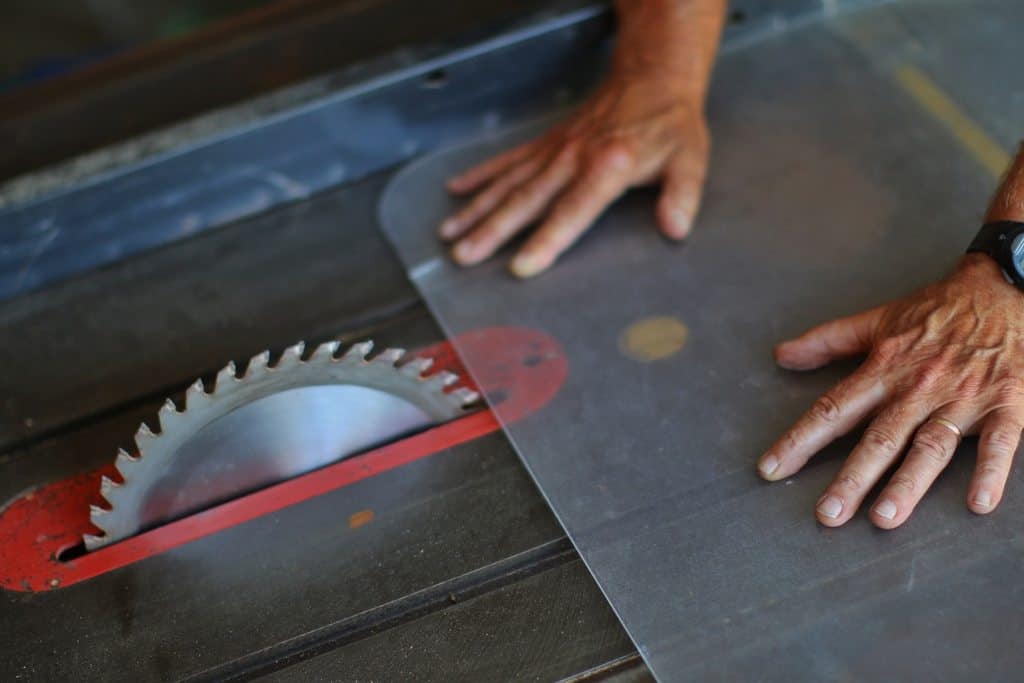As an Amazon Associate we earn from qualifying purchases.
There are many different kinds of plastic and they can be used for a wide variety of projects and purposes. People use plexiglass for craft projects, miniature building, and home improvement. PVC pipe is used by homeowners and hobbyists for plumbing, crafts, and landscaping projects. Plastic items like bottles, bags, and packaging can be up-cycled and reused for multiple purposes.
However, cutting plastic can be challenging and frustrating if you don’t know the right methods or tools.
Contents
How to Cut Plastic with Scissors
Cutting plastic with scissors is not easy and not always recommended, depending on the type of plastic you want to cut. The best way to cut plastic with scissors is to use specialty cordless scissors found in major home improvement stores. These power scissors can cut through plastic and nearly any other kind of material.
What Kinds of Plastic Can You Cut with Scissors?
It’s best to cut thinner plastics with scissors or shears. For example, you can easily cut plastic packaging, bags, and bottles with heavy-duty scissors. If you want to cut heavier plastics, like PVC pipe or plexiglass, you will want to use a different tool. The secret to cutting plastic is to pick the right tool for the job.

Can You Cut Plastic with a Hot Knife?
You can cut plastic with a hot knife. This method cuts the plastic very smoothly and works for almost any kind of plastic. You can find hot knives at home improvement or tool stores.
It’s also possible to make a hot knife using a modified soldering iron tip. Use a mallet or hammer to flatten a round soldering tip into a hot knife for cutting plastic.
Here are a few tools and techniques you can use to cut different types of plastic. Before you begin any project, like modifying equipment or cutting plastic, please make sure to take appropriate safety measures.
Wear safety glasses and secure the plastic material with clamps to prevent slipping, breaking, or bending.
Cutting Plastic with a Hand Saw
To make a straight cut through thick plastic, such as PVC pipe or thick plexiglass, you can use a hand saw.
The drawback to the hand saw cutting method is it will leave a rough edge on the plastic. You’ll need to sand or buff to create a smooth edge.
Cutting Plastic with a Jigsaw
If your project calls for shaped, curved, or rounded cuts, a jigsaw is a good choice of tool. You’ll get the best result if you clamp the plastic securely.
Cutting Plastic with a Dremel
A Dremel is a versatile tool and can be used to cut several different materials including plastic. Use a cut-off wheel to cut plastic using a Dremel.
As the name suggests, the cut-off wheel is used to make straight cuts. In other words, you shouldn’t use it to cut curved shapes or sand the plastic down with.
However, using the best Dremel can be a great way to cut this type of material. Highly versatile, a Dremel can accurately cut anything from metal to PVC.

Non-melt Plastic Cutting Saw Blades
If you want to cut large sheets of plastic such as plexiglass, a table saw with a non-melt plastic cutting blade is the right tool for the job. You can make straight, even cuts with smooth, crisp edges using a table saw with a specialty plastic cutting blade.
You can also use a jigsaw to cut plastic with, but the cut line won’t be as accurate as if you use a table saw.
Finally, if you need to drill into plexiglass, that is an entirely different process.
Conclusion
You can cut plastic of any type or thickness if you choose the right tool for the material. Thicker plastics require heavier equipment while thinner, lighter plastics can be cut with household tools like a Dremel or heavy-duty scissors.
Some methods, like the hacksaw, will require extra finishing steps, like sanding to get smooth edges. Any mistakes you make with the plastic can be fixed with clear epoxy.
It’s also very important to wear safety goggles and secure the plastic material with clamps before you make your cuts.
